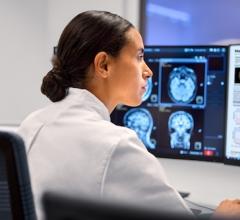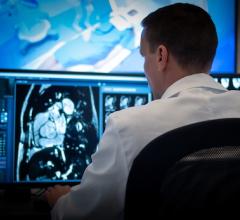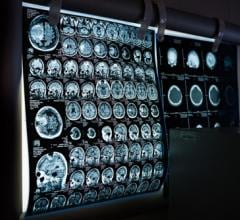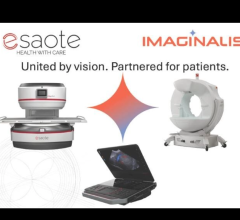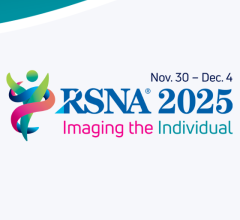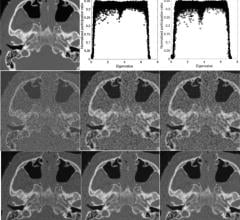
What impact will this newest fusion modality — PET/MR — have on imaging and the industry? Siemens has a device underway, and Philips is researching opportunities. So we launched our own investigation and spoke with major equipment manufacturers; experts building prototypes for simultaneous PET/MRI scanning; a UCLA physician who is an established authority in the field; and a neuroradiologist at a community hospital who fuses his own multimodality images.
It’s still on the burner, and even the name is up for discussion — MR/PET as Siemens calls it or PET/MRI? Herewith, a taste of what’s to come:
What are the most significant clinical and research applications for PET/MRI and the unique benefits over existing modalities?
Jeffrey Bundy: The real advantage is simultaneous image acquisition, plus workflow and diagnosis. We’re exploring many ideas, but current development is focused on a head-only MR/PET device for a large number of neuro applications. Dementia, epilepsy and neuro-oncology have been discussed.
T. Adrian Carpenter: One positive impact will be motion correction with simultaneous real-time MRI used to track motion during PET, and shortening of the two separate PET and MRI procedures often required today in neuroscience. PET/MRI will impact cancer screening of genetically selected populations at risk, cardiovascular PET (motion correction) and neurodegenerative diseases.
Peter S. Conti, M.D.: PET is most useful for brain and whole-body oncology. Adding MRI is state-of-the-art in neurology and clearly preferable to CT.
Neil B. Horner, M.D.: As a neuroradiologist, I have been fusing separately acquired PET and MRI scans for several years. In neuroscience, combining MRI anatomic and PET functional detail elevates imaging to a new level, particularly in tumor imaging.
Piotr Maniawski: The key benefit is accurate co-registration of anatomical and functional data. Applications where CT does not provide optimal information due to low soft tissue contrast could benefit from PET/MRI — head and neck cancer and brain imaging. Additional benefits are elimination of patient CT radiation exposure and simultaneous scanning.
From a technology standpoint, what are the unique challenges in developing and siting this hybrid modality?
Bundy and Nancy Gillen: Making PET operational in a high magnetic field and proper PET shielding to prevent noise in the MRI are key technical obstacles.
Carpenter: Solid state [PET] devices...operate in magnetic fields, however, will still require shielding from MRI radio-frequency and gradient pulses. A further challenge is whether the cost of truly simultaneous PET/MRI is justified if most indications can be scanned using sequential PET/MRI.
Maniawski: If existing technologies are used to build two systems sharing a single patient table, an extremely large room will be required. Simultaneous scanning would require PET detector placement inside the magnet, calling for new PET technology.
The combined system must preserve performance of both MRI and PET. Current advancements in MRI — field strength, clinical application — and PET — time of flight imaging, dynamic imaging — should not be compromised.
What unique demands might PET/MRI make on a department in image management, workflow, staff training and other areas?
Bundy: The proper handling of the large new datasets and tools for image fusion are important and key focuses for Siemens. Imaging departments will have to support different patient flow. For example, the space and time required for patient prep are different for PET and MRI.
Carpenter: Supporting PET/MRI operation in the context of stray magnetic fields will be key, demanding that all the ancillary equipment be MRI-compatible.
Dr. Conti: Particularly important will be physicians, technologists and even nurses cross-trained in both MRI and PET exams as well as their related safety issues.
Dr. Horner: Cross-training staff in CT/MRI and PET scanning is essential to the modality performance and interpretation. Traditionally, these areas have been separate. We must rethink operational management to optimize these new concepts.
Given that PET/MRI and PET/CT have some overlapping clinical uses, will the new modality deliver enough benefits over PET/CT to justify the cost?
Carpenter: New applications will emerge so PET/MRI will not be ‘stealing’ workload from PET/CT.
Dr. Conti: For brain, I could justify the cost today. Whole-body is different; it may be a battle, but specific benefits may emerge.
Dr. Horner: PET/MRI scanners will not be as popular as PET/CT. Many institutions already run PET/CT, and acquiring a PET/MRI may be prohibitive. Instead of PET/MRI, I foresee workstations fusing images from separate scanners.
Maniawski: PET/MRI offers significant differentiators in neurology, extending perhaps into oncology and cardiology. One key benefit over PET/CT could be a simultaneous data acquisition.





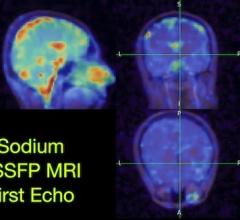
 December 04, 2025
December 04, 2025 

